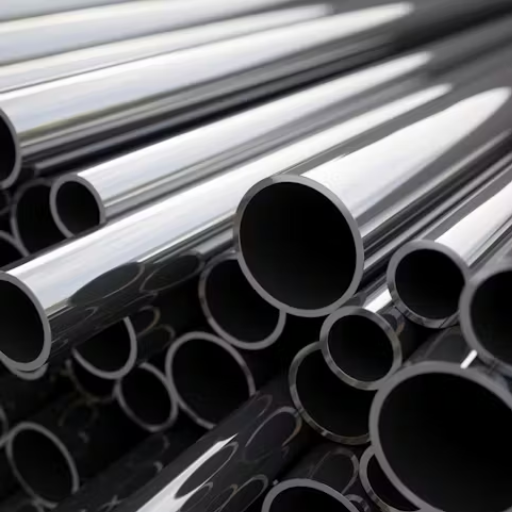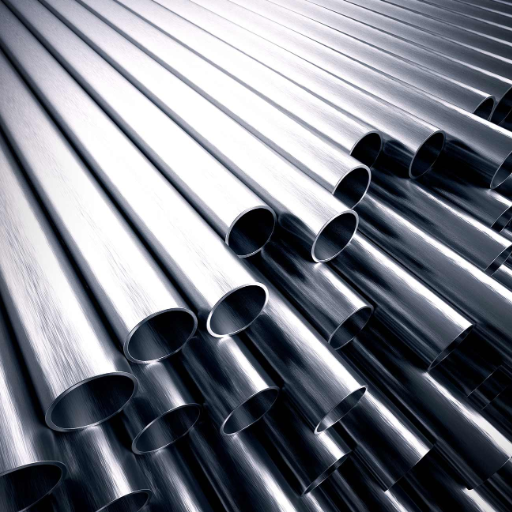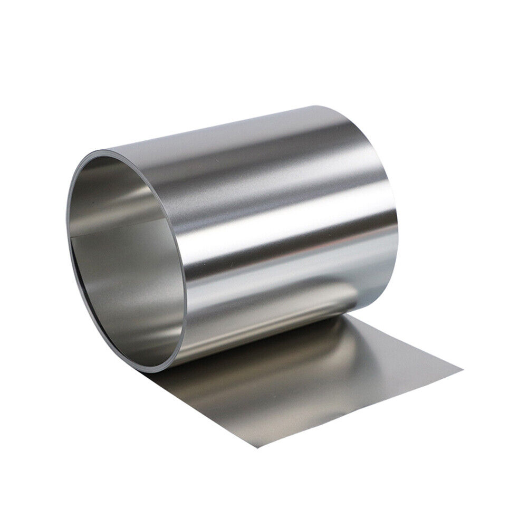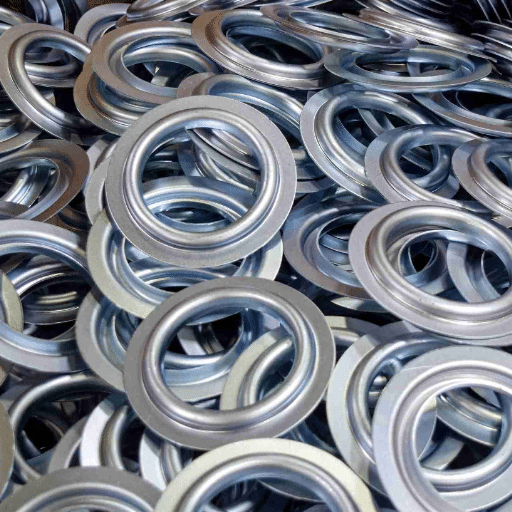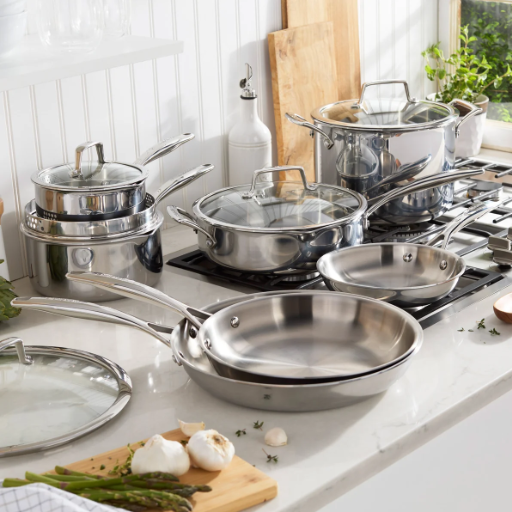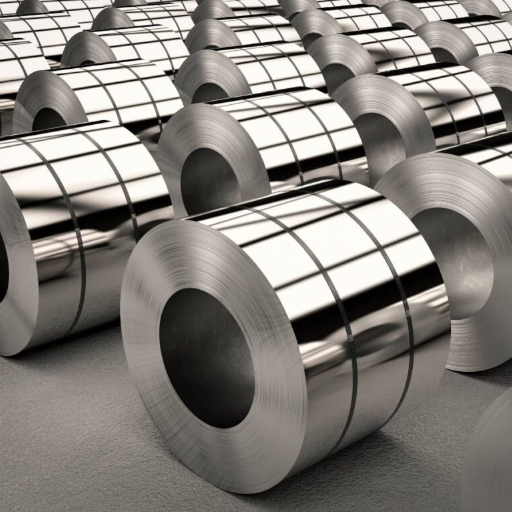Once one truly wishes to grasp the multifaceted factors for correctly choosing stainless steel for a given project, steel 201 and 304 are among the most widely used grades, holding properties that render them application-worthy. Obviously, on the surface, they share quite a few traits, like maintaining their shine. Behind the scenes, however, the chemical make-up of the two stainless steels differs; basically, so does the price or corrosion resistance. This blog will give a detailed insight into the two stainless steel types so that one can equip themselves to make further informed decisions based on their requirements. The guide will consider each material from visual, performative, and economic perspectives, thereby clearly depicting their comparison and the appropriateness for specific needs.
What are the Key Properties of 201 and 304 Stainless Steel?
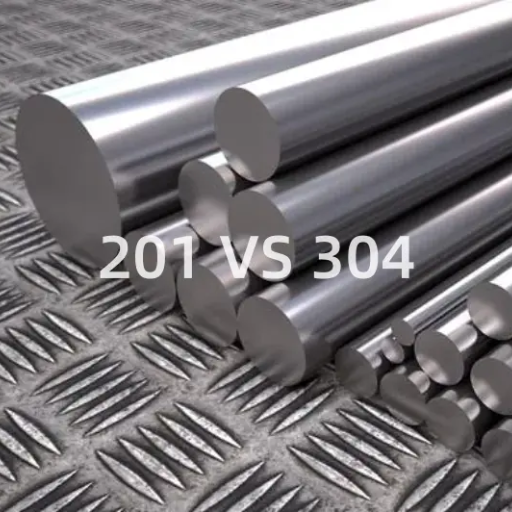
Since no two environments are alike, the grades of stainless steel tend to differ from each other in performance, looks, and applicability. 201 and 304 are quite widely used stainless steels. One must know how they differ, given that differences exist in composition, durability, and cost that should be considered prior to choosing. In this regard, appropriate emphasis will be given to explain these stainless steel grades with their basic composition, corrosion resistance, strength, and so forth.
Mechanical Properties of 201 Stainless Steel
- Tensile Strength: Due to its tensile strength of about 515-735 MPa, it offered good resistance to forces of deformation under tension.
- Yield Strength: It is said that the grade has a yield strength of about 275 MPa, meaning under moderate stress, it is able to resist it and retain its shape without any deformation.
- Elongation at Break: 201 stainless steel allows an elongation at break of about 40%, during which the metal can freely move through operations that involve forming or fabricating.
- Hardness: The Brinell Hardness Number of annealed 201 stainless steel is about 147 HB, giving it a medium level of resistance against surface wear and penetration.
- Density: The density of 201 stainless steel is about 7.85 g/cm³, making it the record weight of all other common austenitic grades.
- Modulus of Elasticity: It has a modulus of elasticity of 200 GPa, which characterizes its modifiability under elastic deformation by the stress.
These properties of combined mechanical behavior classify 201 stainless steel for use in application areas requiring strength, ductility, moderate corrosion resistance, and cost.
Mechanical Properties of 304 Stainless Steel
- Density: 7.93 g/cm³, essentially an excellent weight-to-volume ratio used largely in structural and industrial applications.
- Modulus of Elasticity: Approximately 193 GPa, referring to its property of sustaining elastic deformation on loading, maintaining the integrity of the structure in this process.
- Tensile Strength: 515 MPa to 750 MPa, giving a higher sense of strength, perfect for components that encountered severe stress.
- Yield Strength: Approximately 215 MPa, basically works well under moderate loads prior to any permanent deformation.
- Elongation at Break: 40% to 60%, meaning top-notch ductility that assists with an easy fabricating process.
- Hardness: 201 HB or 92 HRB, giving a medium level of hardness and machinability.
- Impact Resistance: A considerable amount of impact resistance is bestowed; even at cryogenic temperatures, which are thus useful in varied environmental conditions.
- Thermal Expansion Coefficient: Thermal modulus coefficients value approximately 17.2 µm/m°C (0°C-100°C) and ensure a predictable response to thermal fluctuations when embedded within a mechanical assembly.
Compare the differences: 201 and 304 stainless steel
|
Key Point |
201 Stainless Steel |
304 Stainless Steel |
|---|---|---|
|
Composition |
Higher manganese, lower nickel |
Higher nickel content |
|
Corrosion Resistance |
Lower resistance to rust and corrosion |
Excellent corrosion resistance |
|
Strength |
Slightly stronger |
Strong but slightly less than 201 |
|
Ductility |
Moderate ductility |
Superior ductility |
|
Weldability |
Good, with some limitations |
Excellent weldability |
|
Magnetic Properties |
Slightly magnetic if worked |
Generally non-magnetic |
|
Cost |
Lower cost |
Higher cost |
|
Durability |
Suitable for light-duty applications |
Ideal for heavy-duty applications |
|
Applications |
Kitchenware, appliances, decoration |
Food processing, chemical equipment |
|
Temperature Resistance |
Lower heat resistance |
High heat resistance |
|
Work Hardening Rate |
Faster hardening |
Slower, more uniform hardening |
What are the Applications of 201 vs 304 Stainless Steel?
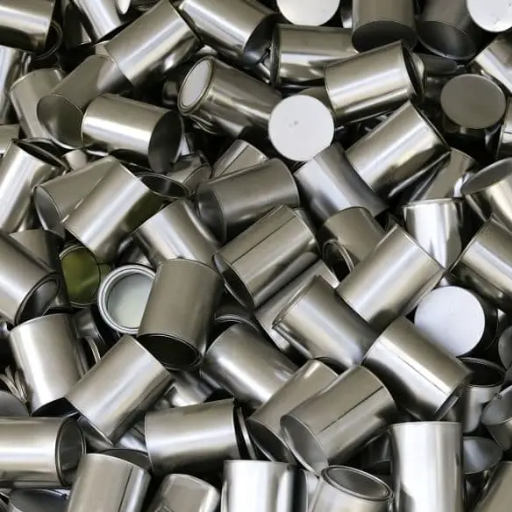
Depending upon the properties of both stainless steel 201 and 304, the applications vary:
- 201 Stainless Steel: It is mostly used in applications where lower cost is the prime consideration, and for light-duty applications. Forgings of kitchen utensils, decorative items, automotive trims, and household appliances where corrosion resistance and durability matter but do not obtain paramount importance are good examples.
- 304 Stainless Steel: Heavy-duty and high-performance applications use it for superior corrosion resistance and temperature tolerance. In food processing, chemical containment, and surgical instrument manufacture, it is highly employed. The 304-grade steel is in great use wherever corrosion is too aggressive to consider, such as the marine environment and industry.
201 or 304 stainless steel ought to be selected on the basis of the requisite performance, endurance, and ambient conditions for an application.
Common uses for 304 stainless steel
- Food Processing and Handling Equipment
-
- Reason: Non-reactive to any food substances, high oxidation resistance, and easy to clean.
- Examples: Sinks, tabletops, cookware, refrigeration, and beverage stations of commercial kitchens.
- Chemical and Pharmaceutical Industries
-
- Reason: Exposure to harsh chemicals, the product maintains its integrity under harsh conditions.
- Examples: Tanks, reactor vessels, and piping systems, and heat exchangers for chemical processing.
- Medical and Surgical Instruments
-
- Reason: Surgical instruments, operating tables, and containers applicable in the medical field.
- Examples: Surgical instruments, operating tables, and containers applicable in the medical field.
- Architectural Applications
-
- Reason: Visual appeal coupled with corrosion resistance for both inside lay and outdoor applications.
- Examples: Handrails, claddings, and decorative panels.
- Automotive and Aerospace Components
-
- Reason: Resistance to extreme temperature and wear for long-term performance and safety.
- Examples: Exhaust components, trim, fasteners, and heat shields.
Applications of stainless steel 201
- Kitchenware and Cookware
-
- Usage: Used in the manufacture of utensils, trays, and mixing bowls.
- Reason: Stainless steel 201 affords satisfactory corrosion resistance for conditions prevailing in food preparation areas and is less expensive.
- Architectural Applications
-
- Usage: Decorative panels, trims, handrails, and cladding are used.
- Reason: Great formability, beautiful finish, interior and exterior design elements.
- Automotive Industry
-
- Usage: Wiper blades and trims and decoration.
- Reason: High strength-to-weight ratio gives a good durability while maintaining a low price.
- Equipment for Transportation
-
- Usage: Railway cars, shipping containers, and trailers.
- Reason: It offers sufficient mechanical strength and corrosion resistance required in the manufacture of different types of transportation equipment subjected to varying environments.
- Household Appliances
-
- Usage: Washer drums, backsplashes, and appliance housings.
- Reason: Offers attractive finish combined with good corrosion resistance, making it ideal for classes requiring household applications.
Stainless steel 201’s adaptability makes it a prime candidate for applications demanding functional efficiency and cost savings. With an approximated tensile strength of about 515 MPa and a moderate oxidation resistance, it can fit high demand industries with certain controlled or mildly corrosiveness conditions.
Is 201 Stainless Steel Food Grade Better than 304?
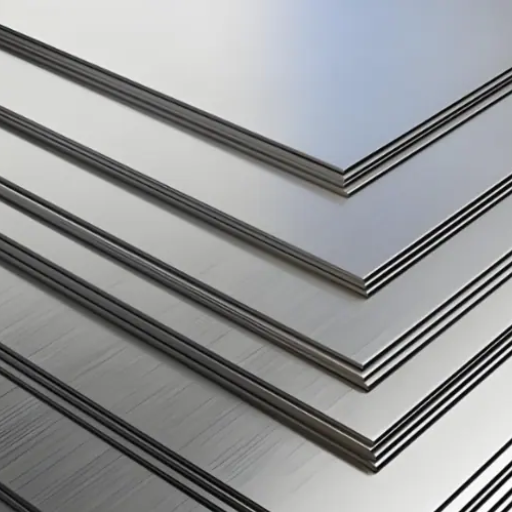
No, 201 stainless steel is not better than 304 for food-grade purposes. 201 stainless steel is less expensive and may be suitable for economic or generally non-critical purposes. It maintains corrosion resistance in the case of corrosive atmospheres of acid and salts, unlike the 304 series steel. So, due to contamination and longevity concerns, 304 is preferred stock for food processing and food-grade storing; A 304 food-grade stainless steel has higher chromium and nickel content and thus gives better performance.
Food-grade standards for stainless steel
The purpose of the stringent regulatory and industry standards observed by food grade stainless steel is to ascertain safety and suitability for a hygienic environment. 304 and 316 stainless steel are the most common grades used for such food-processing purposes. Both grades comply with standards of such organizations as FDA and NSF. Materials for such applications shall not react with food or liquids and shall not corrode while subjected to harsh cleaning and sanitizing procedures.
304 meets the criteria because of its chemical composition, i.e., 18-20% chromium and 8-10.5% nickel. This particular balance of elements within 304 provides resistance to oxidizing agents and acidic conditions present in food processing. 316 is often recommended for those used with chemicals, brines, or acidic foods that are aggressive in any sense, due to the addition of 2-3% molybdenum that imparts even better resistance.
Safety of using stainless steel 201 for food applications
An austenitic alloy of chromium may be called stainless steel 201, having chromium content around 16-18%, with up to 3.5-5.5% nickel, and manganese added to reduce nickel content and production costs. Stainless steel 201 has good strength, work-hardening ability, and somewhat corrosion-resistant properties. Whether this stainless steel can be used for food-grade applications under specific uses with 201 is considered generally safe for light food applications where mild acids, salts, or cleaning agents are present for short periods. However, the lower nickel content offers less corrosion resistance than an environment of grade 304 or 316. 201 can be susceptible to pitting and stress corrosion, substantial safety, and time-limited considerations if present in very acidic or chloride-rich environments. For somewhat superior performance and safety for food processing under more rigorous conditions, stainless steels 304 or 316 are freely preferred to higher levels of resistance to corrosion and food-grade standards, as they are proven on paper.
How to Choose Between 201 and 304 Stainless Steel?
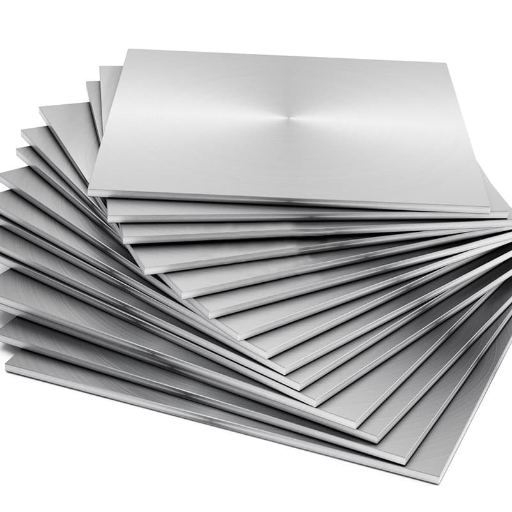
- Environment: It wins because of the higher risk of corrosion when faced with moisture, acid, or chlorides.
- Budget: It is cheaper, but performance may be lacking when confronted with harsher environments.
- Application Requirements: For food processing, medical use, and long-term outdoor exposure, 304 has several precedents under stringent standards and is the better choice.
- Strength vs. Longevity: While it may have good strength, corrosion potentials in extreme environments declare that its longevity takes a dip to some extent compared with that of 304.
Go for 304 stainless steel in critical uses where superior corrosion resistance and durability are required. Use 201 when preserving cost is foremost and environmental exposure is coastline-worthy.
Factors to Consider When Choosing Stainless Steel
- Corrosion Resistance: The stainless grade must be matched to the corrosiveness of environments. For instance, grade 316 stainless would be the best against pitting and cracking in environments exposed to high chlorides such as coastal and marine areas. Grade 201 may do okay in a less aggressive environment.
- Mechanical Strength: Tensile strength and yield strength themselves differ from grade to grade; for example, tensile strength of Type 304 stainless steel, is 621 MPa while that for 201 is slightly higher, at about 641 MPa. These values govern load situations and resistance to deformation.
- Temperature Tolerance: This refers to operational temperature range. Applications classed as high temperature demand the usage of 310 grade stainless steel, which has a strength and oxidation resistance that can uphold itself at around 2000°F (1093°C).
- Weldability: Some grades having a better weldability would include 304 and 316; hence they are considered suitable for complex fabrication designs. Whereas, on the other hand, 410 grades require special welding conditions to prevent hardening that will compromise the integrity of the joint.
- Cost and Budget Constraints: Due to its elemental composition, it is evident that high alloy grades such as 316 and 310 are much more costly than 201 and 409. Therefore, the balance between cost and required properties should be the main concern.
- Fabrication and Machinability: A stainless steel intended for heavy machining or formability would benefit from the use of 303 which has sulfur added to it for better machinability, although at a slight detriment to corrosion resistance.
After careful consideration of such factors, one can confirm that stainless steel is suitable for any application in all respects, meaning performance-wise, environmental challenges, and economic considerations.
How does the intended use affect the choice between 201 and 304 stainless steel?
In stainless steel choice between 201 and 304, the function becomes pivotal due to distinct differences in composition and performance. 304-grade stainless steel is highly versatile with the best corrosion resistance due to its relatively high chromium and nickel contents and is thus a perfect choice in an environment susceptible to moisture, chemicals, or extreme temperatures. It finds large-scale use in the food processing, pharmaceutical equipment, and outdoor architectural industries where it needs to face a very cruel environment and stands great in harsh conditions.
How Do 201 and 304 Stainless Steel Compare in Cost?

Generally speaking, stainless steel grade 201 is a cheaper product with its nickel content being lowered somewhat and substituted by manganese and nitrogen. This price reduction makes 201 the best option for economic applications where durability under extreme conditions is not primary. Grade 304 is more expensive owing to having greater nickel and chromium, but then also offers better corrosion resistance and is more versatile. Therefore, when deciding on the two grades, the choice should be made balancing the budget against the required performance for the application.
What factors influence the pricing of 201 vs 304 stainless steel?
Several factors could be cited as price determinants for 201 and 304 Grade stainless steels, but at the forefront are their elemental compositions, market demands, and production costs. Being an expensive material, nickel is substituted in Grade 201 stainless steel in various degrees by manganese and nitrogen, which considerably lowers its cost. On the contrary, Grade 304 stainless steel draws on increased amounts of nickel and chromium, which raise the cost but improve corrosion resistance and durability.
Market demand is also essential in price determination. Grade 304 is in high demand, mostly due to the fact that it can be used in varied applications and often performs better in that regard, all other factors remaining constant, making it somewhat price-driven demand-wise. The prices for materials, such as nickel and chromium, due to shifts in their global prices, will have a direct bearing on the production cost for both grades and consequently on their selling prices. In the last place, energy costs, efficiencies in manufacturing, and economies of scale cause price disparities since grade 201 usually demands less energy and fewer resources in its production and, therefore, emerges as a generally cheaper option.
Is stainless steel 304 worth the higher cost compared to 201?
In deciding whether it is truly worth paying extra for stainless steel 304 over 201, an analysis must be undertaken focusing on the properties, applications, and performance of the two grades in the long term. Stainless steel 304 will resist corrosion better with its higher chromium and nickel content, which finds use in applications exposed to moisture, chemicals, or seawater. Industries such as food processing and marine applications, as well as medical equipment, will find this grade well suited.
On the other hand, Grade 201, being less of an expensive option, works fine in an application that is not exposed to highly corrosive conditions. However, this lack of corrosion resistance and hence longevity can mean more cost for upkeep or replacement over time when placed in very aggressive environmental conditions.
Reference Sources
2. Green Inhibition of Pitting Corrosion in Stainless Steel 304 Using Clove Extract: Clove extract acted as an effective green inhibitor for pitting corrosion in SS 304 within 0.5 M HCl. The inhibition efficiency exceeded 90% at 12 ppm concentration. The adsorption process was non-ideal and best described by Flory–Huggins and kinetic–thermodynamic models.
Frequently Asked Questions (FAQs)
Q: What are the main differences between stainless steel 201 vs 304?
A: The key differences between stainless steel 201 and 304 include their chemical composition, with 201 containing a higher manganese content and lower nickel content compared to 304. This results in 201 being less corrosion-resistant than 304, making 304 stainless steel crucial for applications requiring high durability, especially in environments exposed to moisture.
Q: Is stainless steel 201 vs 304 suitable for making water bottles?
A: While both stainless steel 201 and 304 can be used to make water bottles, stainless steel 304 is preferred due to its superior corrosion resistance. This makes 304 stainless steel water bottles safer and more durable for long-term use, especially in outdoor conditions.
Q: How does the carbon content differ in stainless steel 201 and 304?
A: Stainless steel 201 typically has a higher carbon content than 304, which contributes to its strength but reduces its corrosion resistance. In contrast, 304 contains a lower carbon content, making it more suitable for environments where high corrosion resistance is essential.
Q: Why is 304 stainless steel crucial for certain applications?
A: 304 stainless steel is crucial due to its excellent corrosion resistance, strength, and ability to maintain its integrity in high-temperature environments. It is commonly used in food processing, medical devices, and kitchen utensils where hygiene and durability are paramount.
Q: Are there any cost differences between 201 and 304 stainless steel?
A: Yes, 201 stainless steel is generally less expensive than 304 due to its lower nickel content and different alloying elements. This makes 201 a cost-effective choice for applications where corrosion resistance is less critical.
Q: Can you explain the corrosion resistance of 201 vs 304?
A: The corrosion resistance of 304 stainless steel is significantly better than that of 201. 304 stainless steel contains higher levels of nickel and chromium, which enhance its ability to form a protective oxide layer, making it less susceptible to rust and corrosion in harsh environments.
Q: What is the significance of nickel content in stainless steel 201 vs 304?
A: Nickel content plays a critical role in determining the corrosion resistance of stainless steel. Stainless steel 201 has a lower nickel content compared to stainless steel 304, resulting in reduced resistance to oxidation and corrosion, which is vital for applications exposed to moisture.
Q: Which type of stainless steel is better for high-temperature applications, 201 or 304?
A: Stainless steel 304 is better suited for high-temperature applications due to its ability to maintain strength and stability at elevated temperatures. In contrast, 201 may not perform as well under such conditions due to its different alloy composition.
Q: How do the mechanical properties of 201 steel compare to 304?
A: While both 201 and 304 stainless steel have good mechanical properties, 304 typically exhibits better ductility and toughness, making it more suitable for applications requiring fabrication and forming. 201 may be stronger but is less ductile.

